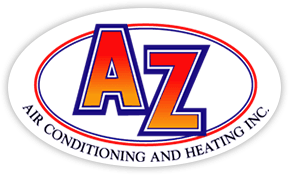
You shouldn’t need to give up comfort or drain your wallet to keep your house at a pleasant temperature during summer weather.
But what is the best setting, exactly? We go over suggestions from energy experts so you can find the best temperature for your house.
Here’s what we recommend for the most energy-efficient setting for air conditioning in Los Angeles.
Recommended Thermostat Settings for Summer
Most families find placing the thermostat at 72-73 degrees provides ideal comfort. However, if there’s a sizeable difference between your interior and outside temps, your cooling bills will be bigger.
This is our advice based on the U.S. Department of Energy (DOE) and ENERGY STAR®.
While at home: 78 degrees. While that sounds too high, there are methods you can keep your house cool without having the air conditioner on constantly.
Keeping windows and blinds down during the day keeps cool air where it needs to be—inside. Some window coverings, such as honeycomb shades or plantation shutters, are designed to provide more insulation and better energy savings.
If you have ceiling fans in your house, the DOE says you can increase thermostat temperatures about 4 degrees higher without giving up comfort. That’s because they refresh by a windchill effect. Since they cool people, not areas, shut them off when you move from a room.
If 78 degrees still feels too hot at first glance, try running a trial for a week or so. Begin by raising your setting to 78 degrees while you’re home. Then, steadily lower it while adhering to the tips above. You may be shocked at how cool you feel at a higher temperature setting.
While away: 88 degrees. There’s no rationale for keeping the AC going all day while your residence is vacant. Turning the setting 7–10 degrees warmer can save you an estimated 5–15% on your cooling costs, according to the DOE.
When you come home, don’t be tempted to put your thermostat below 78 to cool your residence faster. This isn’t effective and often produces a bigger AC expense.
A programmable thermostat is a good way to keep your settings in check, but you have to set programs. If you don’t use programs, you risk forgetting to change the set temperature when you take off.
If you’re looking for a handy solution, think over getting a smart thermostat. This thermostat connects with your phone, so it is aware when you’re at home and when you’re away. Then it instinctively changes temperature settings for the best savings. How much exactly? Typically $180 yearly on heating and cooling, according to ENERGY STAR.
Another advantage of having a smart thermostat? You can use your phone to watch and adjust temperature settings from just about anywhere.
While sleeping: Around 70 degrees. While ENERGY STAR recommends 82 degrees, that could be unpleasant for most families. The majority of people sleep better when their sleeping area is chilly, so that’s why the National Sleep Foundation suggests 60–67 degrees. But that may be too chilly, based on your PJ and blanket preference.
We advise following a comparable test over a week, moving your thermostat higher and steadily decreasing it to find the ideal setting for your residence. On pleasant nights, you might learn keeping windows open at night and relying on a ceiling fan is a preferable idea than operating the air conditioning.
More Approaches to Save Energy During Hot Weather
There are extra approaches you can conserve money on utility bills throughout hot weather.
- Upgrade to an energy-efficient air conditioning system. Central air conditioners only are effective for about 12–15 years and become less efficient as they age. An upgraded air conditioner can keep your home more comfortable while keeping electricity expenses down.
- Set regular air conditioner maintenance. Annual air conditioner maintenance keeps your system operating like it should and may help it work at greater efficiency. It can also help lengthen its life span, since it allows professionals to uncover little problems before they create a major meltdown.
- Replace air filters frequently. Follow manufacturer instructions for replacing your air filter. A clogged filter can lead to your system short cycling, or run too much, and increase your utility.
- Measure attic insulation levels. Just about 90% of houses in the U.S. don’t have adequate insulation, according to the Insulation Institute. The majority of southern climates require 13–14” of attic insulation, while northern climates should have 16–18”.
- Have your ductwork inspected. Ductwork that has come apart over time can leak cool air into your attic, walls or crawl space. This can lead to major comfort issues in your house, like hot and cold spots.
- Seal holes, doors and windows. Keep hot air in its place by plugging openings. You can also caulk or weather strip doors to seal more cool air inside.
Use Less Energy During Hot Weather with AZ Air Conditioning and Heating
If you want to save more energy during warm weather, our AZ Air Conditioning and Heating professionals can provide assistance. Get in touch with us at (877) 559-6081 or contact us online for extra details about our energy-saving cooling solutions.
